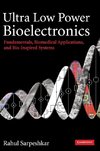
-
 Anglický jazyk
Anglický jazyk
Electrocoagulation for Remediation of Reactive Dye Wastewaters
Autor: Priya Saxena
Electrochemical wastewater treatment technology has started to regain attention because it is an environmentally friendly option that can produce the least sludge, does not require chemical treatment, and can remove pollutants from water without adding chemicals.... Viac o knihe
Na objednávku, dodanie 2-4 týždne
40.68 €
bežná cena: 45.20 €
O knihe
Electrochemical wastewater treatment technology has started to regain attention because it is an environmentally friendly option that can produce the least sludge, does not require chemical treatment, and can remove pollutants from water without adding chemicals. Electrocoagulation refers to an electrochemical method that uses electric current to remove suspended, emulsified, or dissolved pollutants from water. Electrocoagulation combines the advantages of coagulation, flotation, and electrochemistry. Electrocoagulation serves as an innovative technique for treating wastewater from the food, tannery, petrochemical, and textile sectors. Some vital merits of this technology include quick treatment times, minimal chemical addition, simplicity of operation, quick sedimentation of electrogenerated flocs, and decreased sludge production. Electrocoagulation process performance is influenced by a number of variables, including wastewater pH, the type and concentration of supporting electrolyte, the type, number, and size of electrodes, interelectrode distance, configuration of metals, current density, charge loading, and operation duration.
- Vydavateľstvo: LAP LAMBERT Academic Publishing
- Rok vydania: 2023
- Formát: Paperback
- Rozmer: 220 x 150 mm
- Jazyk: Anglický jazyk
- ISBN: 9786206178903











 Nemecký jazyk
Nemecký jazyk 